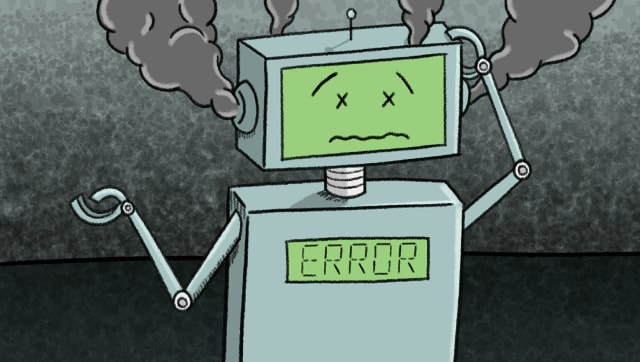
OpenAI has quietly shut down its tool that detected if a piece of text was generated using AI. The reason for shutting the product down was its abysmal accuracy, and the fact that even repeated attempts couldn’t increase its accuracy
AI text generators have become so proficient in writing like humans that even OpenAI, the makers of ChatGPT, which, arguably is the most advanced text generator, can no longer differentiate between a piece that has been generated by AI, and one that has been written by humans.
As meme-worthy as this development is, this does not bode well for AI studios and their plans to differentiate between AI-generated content.
OpenAI shuts down its AI text detector
OpenAI, the company behind ChatGPT, has quietly discontinued a tool designed to detect AI-generated text. The decision was made because the tool’s accuracy did not meet their standards, as mentioned in a blog update on July 20, 2023. OpenAI acknowledged the need for better techniques to trace the origin of text and is now working on improving the tool.
Related Articles

ChatGPT is losing users by the hundreds, everyday. However, OpenAI is not worried

Sam Altman’s Monster: OpenAI scared of ChatGPT 4 which can now recognise and ‘read’ human faces
Originally, the AI detection tool was launched to assist educators in identifying instances of academic cheating, as detecting AI-written text had become a significant concern. However, OpenAI was aware of the limitations of such tools and cautioned against relying solely on them for decision-making.
The reasons why students might use AI tools, such as stress or seeking shortcuts, are complex issues that require more than just technological solutions.
AI can’t be trusted with anything
Even Turnitin, a popular plagiarism-checker software used in schools, faced accuracy issues with its new AI-written content detection tool. False accusations against students using AI to cheat were a concern after the software incorrectly identified over half of the text in a test conducted by the Washington Post.
Experts had previously raised concerns about ChatGPT and similar generative AI technologies in January, fearing that they could exacerbate existing problems in education, such as an overemphasis on tests and formulaic essays.
The current state of AI technology allows humans to imitate the writing style of AI models, and conversely, AI models can replicate human-like writing if given appropriate prompts. Exploiting this capability, individuals can easily evade AI detectors by instructing ChatGPT to write in the style of a known author. Despite this challenge, there has been a recent proliferation of commercial AI detectors over the last six months.
Prominent AI writer and futurist, Daniel Jeffries, expressed his scepticism regarding the effectiveness of AI detection tools, particularly highlighting OpenAI’s struggles with their own tool. “If OpenAI can’t get its AI detection tool to work, nobody else can either,” he tweeted “I’ve said before that AI detection tools are snake oil sold to people and this is just further proof that they are. Don’t trust them. They’re nonsense.”
What happens to the plan of watermarking AI-generated texts?
Ongoing research is exploring the possibility of watermarking AI-generated text by deliberately manipulating the frequency of words in the output. However, the study mentioned indicates that such text watermarking methods can be easily bypassed by AI models that are capable of paraphrasing the content.
Given the current state of AI writing technology, it appears that AI-generated text is here to stay. As we move forward, AI-augmented text has the potential to seamlessly blend with the great works of human history, making it difficult to detect if used skillfully.
In light of this development, it may be essential to shift our focus from solely examining how text is composed to ensuring that it accurately reflects the intended message of the human author. Effective communication should be the primary goal, regardless of whether the content is generated by AI or written by a human. As AI continues to play a significant role in content creation, emphasizing meaningful expression and representation of ideas becomes increasingly important.
Stay connected with us on social media platform for instant update click here to join our Twitter, & Facebook
We are now on Telegram. Click here to join our channel (@TechiUpdate) and stay updated with the latest Technology headlines.
For all the latest Technology News Click Here
For the latest news and updates, follow us on Google News.
